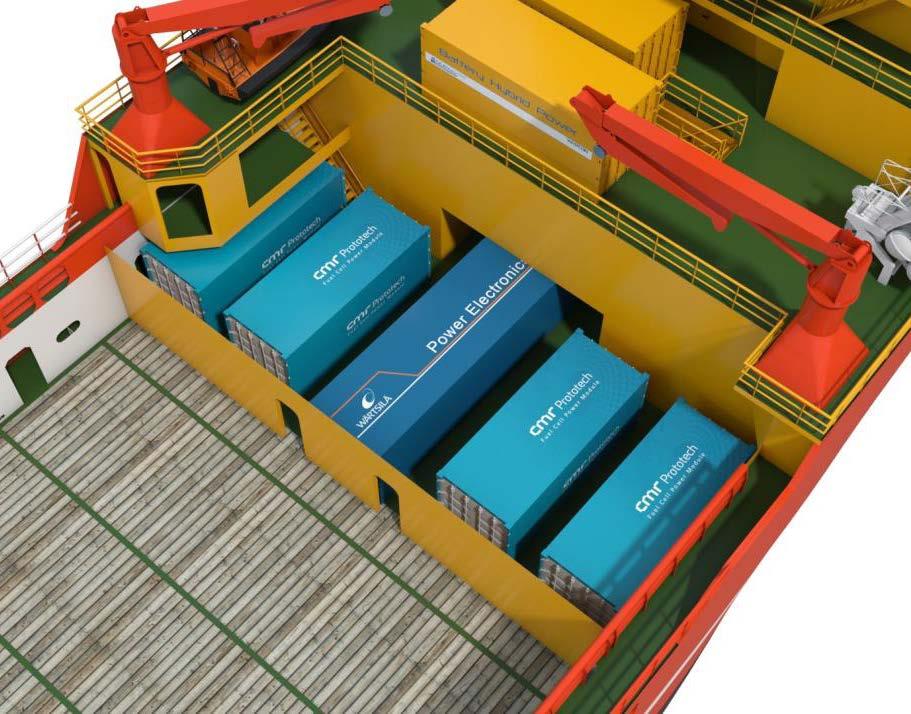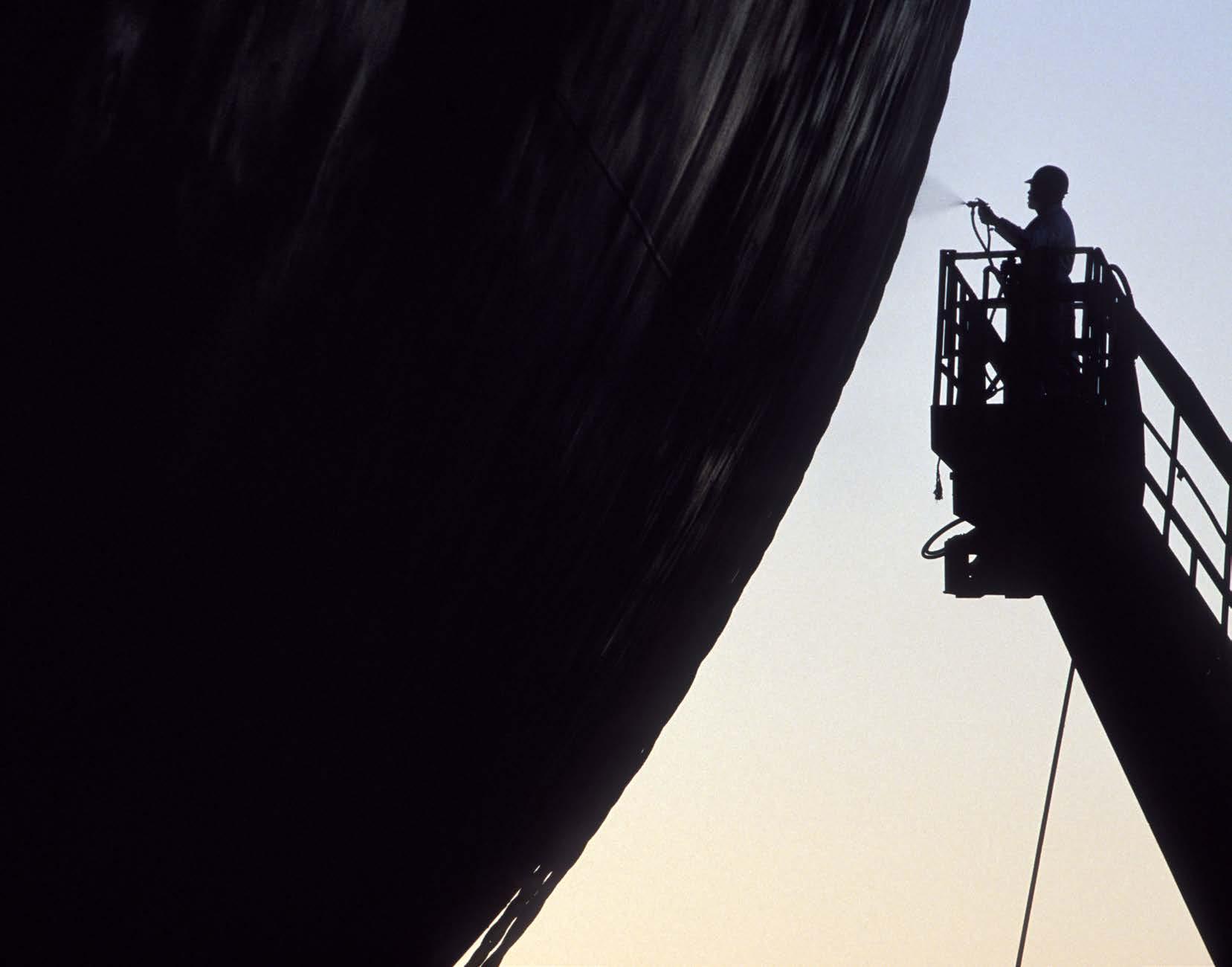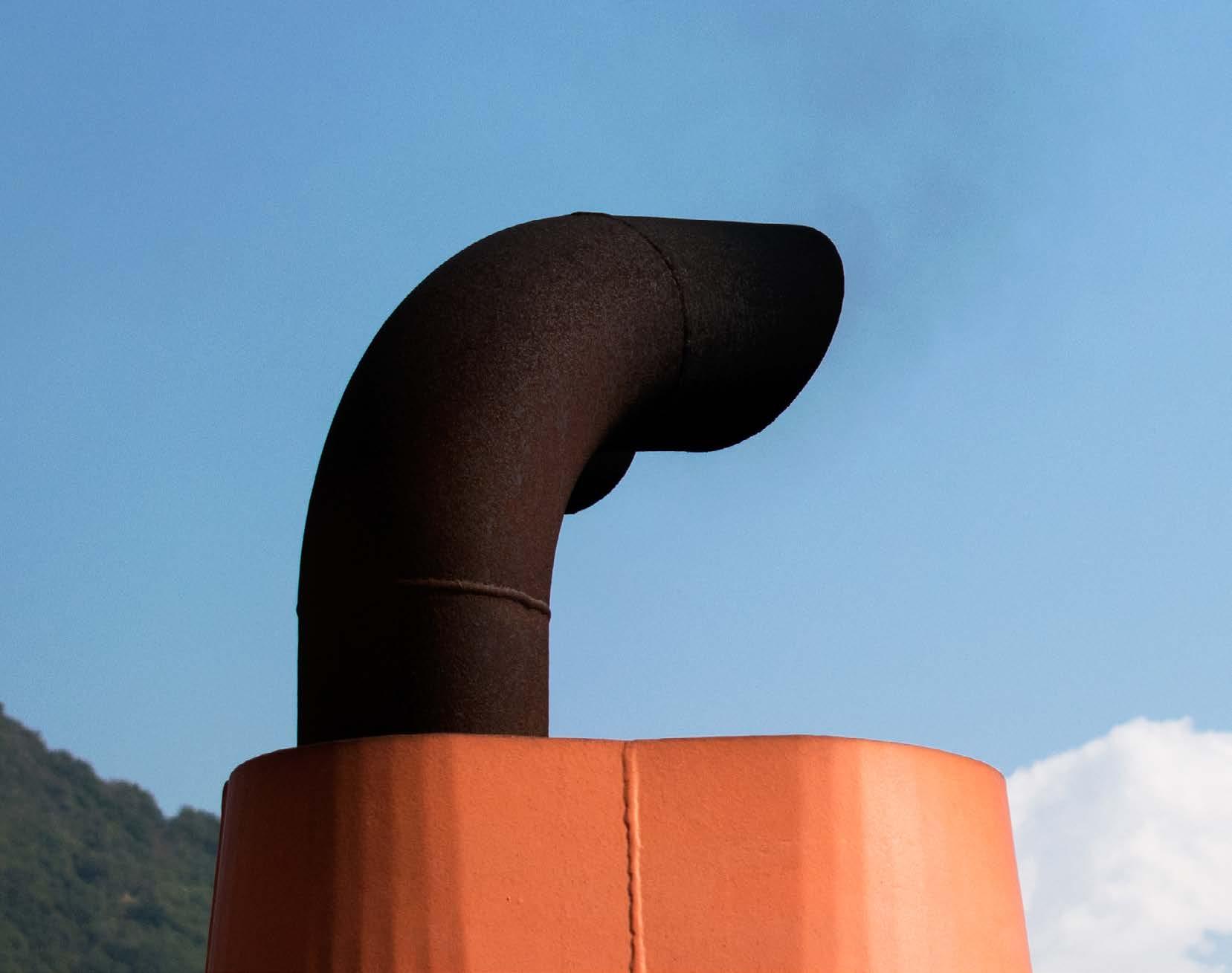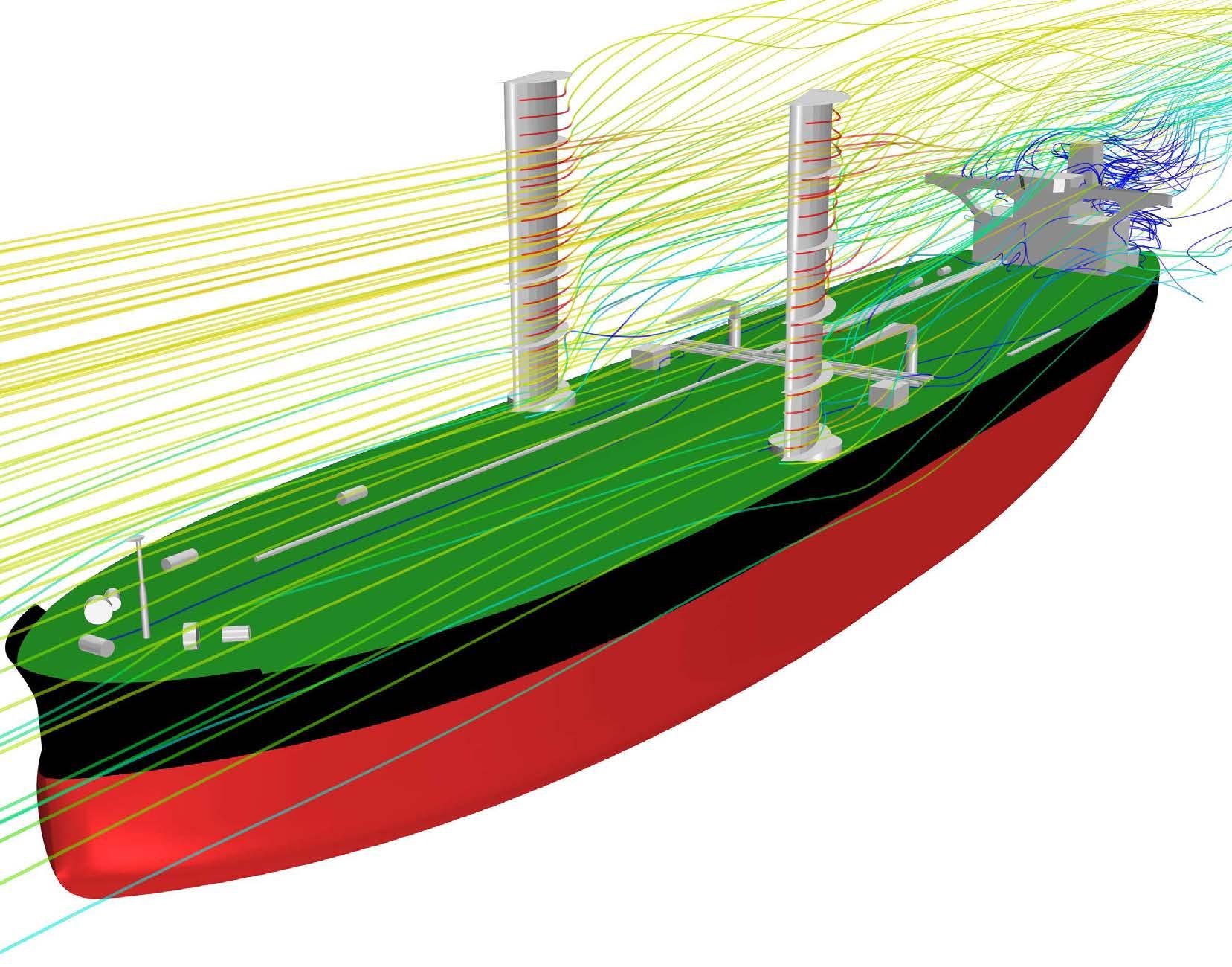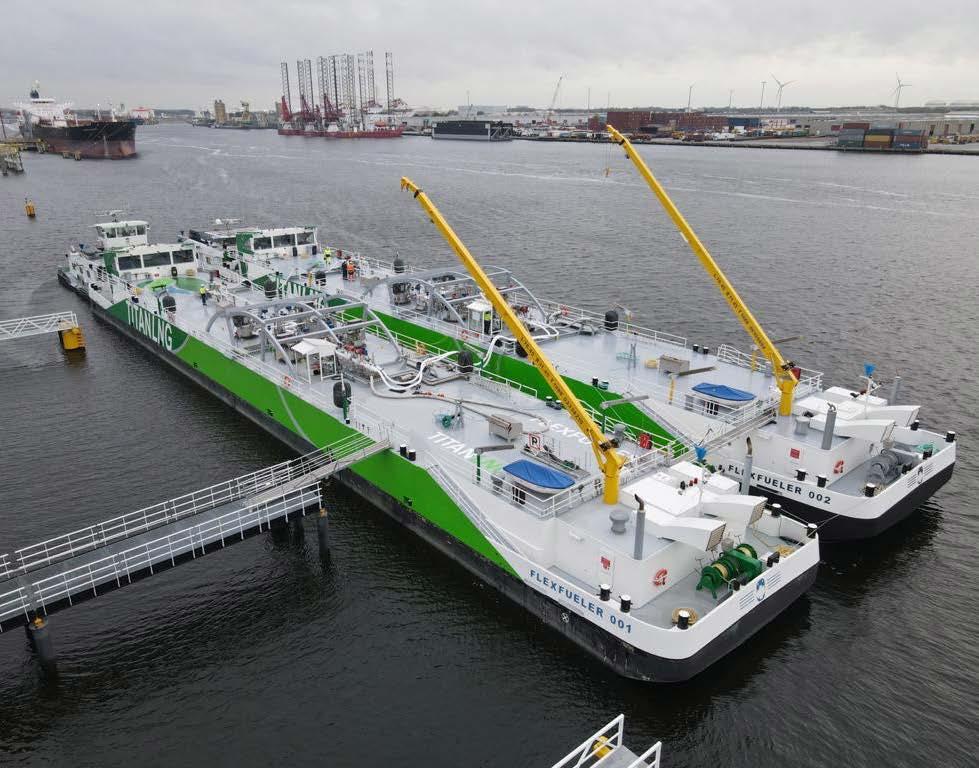
10 minute read
PROPULSION
from CSI Spring 2021
by Maritime-AMC
Clean Shipping International spoke to leading lube oil manufacturers to find out how they will have to adapt in the future as engines switch to using renewable fuels and advanced combustion techniques
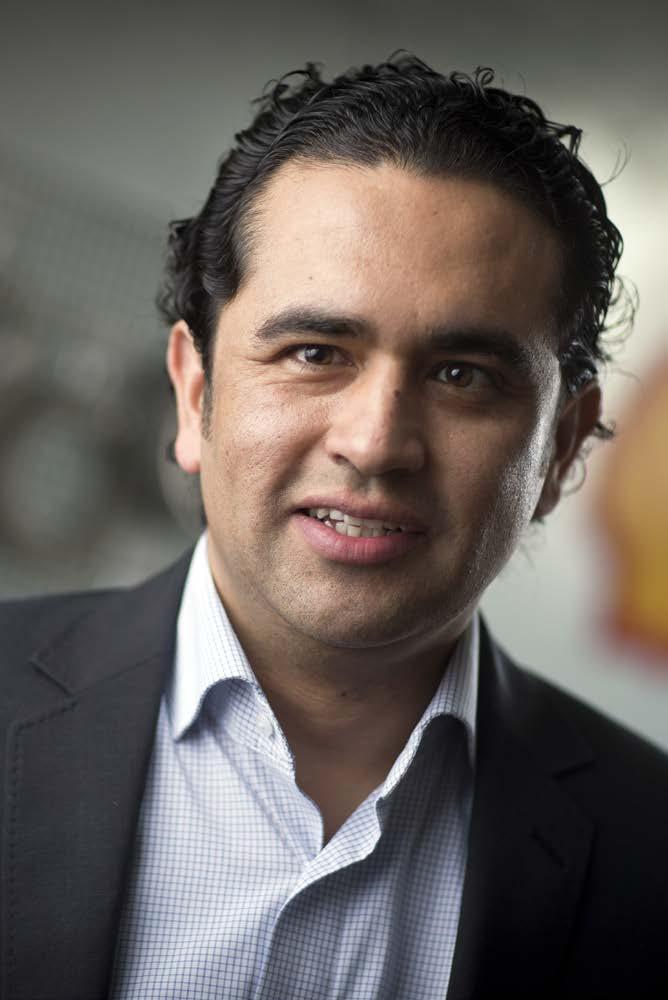
POURING OIL ON
TROUBLED WATERS
Dr Luis Garcia, Technology Manager – Marine & Power Engine Lubricants, Shell Global Solutions (Deutschland) GmbH, says that shipping is one of the harder sectors to de-carbonise and there will likely be multiple solutions across sub-sectors.
Shell’s analysis points to hydrogen with fuel cells as the zero-emissions technology that has the greatest potential to help the shipping sector achieve net-zero emissions by 2050.
However, a zero-emissions fuel is not likely to be available on a commercial scale globally until the 2030s. The industry must take action to reduce emissions now with solutions available today, such as advanced engine lubricants and digital optimisation technologies, he says.
There is consensus in the industry that deepsea-going ships will continue to rely on the internal combustion engine for their main propulsion.
However, in recent years, significant gains in fuel efficiency have been attained by engine manufacturers (OEMs) in diesel, gas and dual fuel (diesel/natural gas) marine engines. The latest engine designs operate at higher pressures and temperatures and aim for using less lubricant per unit of power produced. This has resulted in increased performance demands for marine lubricants and in response, additive companies and lubricant suppliers are currently developing higher performing oils.
As an example, MAN Energy Solutions (MES) 2-stroke division has recently introduced a two category system looking for higher performance cylinder oils and Shell and other players in the industry are currently working on developing category II oils at 40 BN level.
Lubricant solutions will also need to be developed at an accelerated pace in line with shortened hardware development cycles.Typically, developing a new engine lubricant can take a few years, from laboratory studies, bench and rig testing, lab engine testing to full-size engine testing. Added to this, the engine design involved might not be entirely mature, for example, the original equipment manufacturer (OEM) could still be making the first field
experiences with the design and fine tuning some hardware such as piston rings.
Looking at the near future, OEMs will face a great challenge to create engine designs capable to operate safely and even more efficiently with a variety of new gaseous and/or liquid fuels.
Future fuel prospects are fundamentally different from existing diesel fuels or natural gas, so it can be expected that combustion concepts and lubrication needs will differ from those already known for recently developed engines.
Whereas some of the lubricant performance needs and possible challenges can be estimated for the use of carbon-free or carbon neutral fuels, there is limited availability or still non-existing capacity to test with these fuels (eg ammonia) and so it is likely that different lubricant technology will be needed to cope with combustion products and operating conditions in future marine engine applications.
As development cycles for marine engines and lubricant solutions are currently not synchronised, this can lead to a difficult start on addressing lubrication needs and reliability for engines to operate with future fuels.
“It is of the utmost importance for OEMs and lubricant developers to closely collaborate in understanding the possible challenges and co-develop or even co-engineer solutions that will enable higher efficiency and reliable engine systems in which lubricants play a role as an important component.
“Collaboration can lead to a better definition of performance needs and to create more efficient ways to test reliably lubricants technology that will be required to cope with future fuels,” Dr Garcia concludes.
FACING THE CHALLENGES OF SWITCHING
Speaking about the switch to very low sulphur fuel oils (VLSFOs) Chevron Marine Lubricants claimed that it had addressed their use given the distinctive engine condition challenge associated with the widespread switch.
The manufacturer said that some shipowners using VLSFO had reported a build-up of red deposits on piston crowns and top edges, sometimes combined with red iron burrs in scavenge ports. The deposits are associated with abnormal liner wear — or scuffing — since the fuel switch, particularly on older two-stroke marine diesel engines.
Chevron used a four-step laboratory analysis to narrow down the likely causes. Deposits were found to include a compound of materials, including harmless detergent additive residue and iron oxide. The detergent residue was determined not to be a source of wear, as the deposits were only found in single cylinders rather than across the engine.
The fuels associated with the red deposit and scuffing incidents were also analysed. Chevron found that the VLSFO blends involved showed differences from others in two fuel characteristics, typically a lower calculated carbon aromaticity index (CCAI) and high estimated cetane number (ECN).
Although VLSFO has been found to offer a typically higher energy value content than heavy fuel oil (HFO), and therefore can offer value for money, its combustion engine density properties can result in harsher operating conditions and more stress on the engine components.
While most users transitioned smoothly, these properties can cause trouble for older engines, says Luc Verbeeke, senior engineer, Chevron Marine Lubricants.
“While newer ships do not have a problem using these fuels, engines already closer to an overhaul did struggle sometimes,” he says. “Cylinder units that could have run for another six months or a year on HFO did not survive the tougher conditions with the new fuels.”
An engine maintenance programme recommended by Chevron, supported by routine testing using Chevron’s Dot. Fast on-board testing kit, helped to provide protection against liner wear and damage.
Incidents of red deposits and scuffing that were relatively frequent in the early days of VLSFO operation have since reduced significantly, the company claims.

FUTURE PROOFING ENGINES
Jean-Philippe Roman, project manager at Total Lubmarine explains how the energy major claims to be ahead of the curve with its recently requalified Talusia Universal single cylinder oil and how the company’s engine lubrication solutions are helping optimise engines of the future.
“Twelve months into IMO2020 and we are already seeing how the transition is shaping a cleaner industry,” he says.
New internal combustion engines (ICEs) that are readily available across the shipping industry are being designed to match the targets on GHG emissions from the international shipping sector according to the IMO goals: » reduce carbon intensity of 40% by 2030 and of 70% by 2050 » reduce GHG emissions of 50% by 2050 What about the current engines operating in today’s ocean-going vessels? Advancements in the chemistry of lubes ensures engines can run cleaner and are optimised for better performance, says Roman.
However, any adaptation of an engine lubricant is influenced by two parameters, both of which are aimed at minimising greenhouse gas (GHG) emissions and to reduce fuel consumption: » The increase of the constraints in engine operation, for example,
increase of peak pressure, increase of temperature and the recirculation of exhaust gases » The diversity of the fuels available at the point of purchase, existing or renewables, and the way to use them in marine engines. The first, and often more demanded adaptation, is related to existing engines. Whether they are diesel or dual-fuel engines running with either liquid fuels or LNG, these engines can accumulate deposits.
An example of this is underlined by the two-stroke engine manufacturers. Since the introduction of the IMO2020 regulation change on fuels, there is an imbalance between the low BN lube oils in use and the need for detergency to maintain clean engines.
Thus, the first action for the lubricant supplier is to adapt to this situation. This is what Total has been doing with its lubricants range.
Work continues on new alternatives to help further improve engine performance and cleanliness, but more importantly, to move the baseline to a higher level as required by the of ICE technology improvements.
The second approach, which in Romans’ opinion is a priority, is linked to the alternative fuels that are, or will soon be on the market. The importance of this is shown by a huge number of projects gathering all the stakeholders together, from the technical specialists to the regulators, including the ship operators, at a level often above the shipping sector itself.
Engine technologies dedicated to these alternative fuels are being developed quickly and by 2030, Total estimates there will be many commercial applications of oxygenated fuels like methanol or ethanol, as well as mixtures of conventional fuel oils with biofuels. In addition, engines running on “no-carbon” fuels, such as ammonia and hydrogen, will begin to be seen.
Existing lube oils have been designed to achieve the reliability of engines running on conventional high and low sulphur fuel oils, so it is reasonable to expect increased research and development into lubes that will handle alternative fuels of the future.
Even though the alternative fuels market is not yet at a level of maturity to accept the economic change that sparks the scaling-up of technology improvements, the industry must anticipate the demand and be ready to propose sustainable solutions in engine lubrication that will most likely be flexible enough to run on several types of fuels.
“Our work in this area with Talusia Universal is just one example of how we have created a single cylinder oil for multiple fuel use, including LNG with OEM endorsement from MAN ES and recently WinGD,” Roman explains.
Total Lubmarine technicians are focused on identifying performance issues relating to the fuel and lubricants used by each ship operator in their engines.
Their chemical nature is assessed as are base assessments on the engine operating condition reported by the engine manufacturer, and the company works closely with the OEMs on all elements of lubricant development and options by sharing insight and knowledge on the product chemistry, engine inspections and recommendations, Roman says.
The manufacturer’s product chemists address performance issues through the formulation and chemistry of the lubricant.
This process is complex because the lubricant has a critical role to play in achieving engine cleanliness in all conditions. And, Total’s approach applies to any engine design (with any OEM) and to any engine technology (diesel or dual-fuel) — engine lubricants must handle the potential issues related to each fuel mix available to the operator, and they must also provide a level of qualification in the reliability of the emission treatment systems that are coupled to the engine.
All the solutions highlighted have to be tested, selected and validated in operation, which is a significant challenge when considering that the vessels using the very latest technologies and new fuels are also providing a “test-bed” for industry as an early adopter.
“To achieve the planned goals of 2030 and beyond, we all have a responsibility to work in co-operation with various stakeholders in a project.
“The collective mindset of all the lubricant manufacturers including our own, is set on the ambition to develop viable technologies and to test it at scale. As an industry, we must also look to change our paradigm and thinking,” says Roman.
“Lubricants are not just for a unique fuel type — the conventional fuel oils of the market — but for engines of various technologies, flexible enough to run on many different fuel types, from the ‘here and now’ solution of LNG to the future fuels such as biofuels, synthetic fuels, ammonia, or on mixtures and combinations of these fuels that at the end of the day, aim to match the IMO targets on GHG emissions of vessels running internal combustion engines,” he stresses.
He claims that Talusia Universal is an example of this where a single cylinder oil was created for multiple fuel use, including LNG.
In terms of lubricant formulation, many more new advanced chemistries will enter the market, such as low- or no-ash components.
As an example of this approach, Total has pioneered this strategy with Talusia Optima — a product that uses ash-free neutralising molecules.
Roman claims that this was a unique and patented technology that provides fast and effective acid neutralisation without mineral deposit build-up from the most demanding two-stroke engines. This lubricant was developed through intensive R&D at Total’s Solaize Research Centre.
“Looking to the future, I believe every one of us has a part to play in the transition to a cleaner, better performing industry. It is a period in our time, which represents incredible evolution through innovation and advancement, and it’s exciting.
“At Total Lubmarine, we are confident tomorrow’s developments in marine lubricant chemistries will provide even better solutions for OEMs and operators — and not just on the lead up to 2030,” he concludes.

